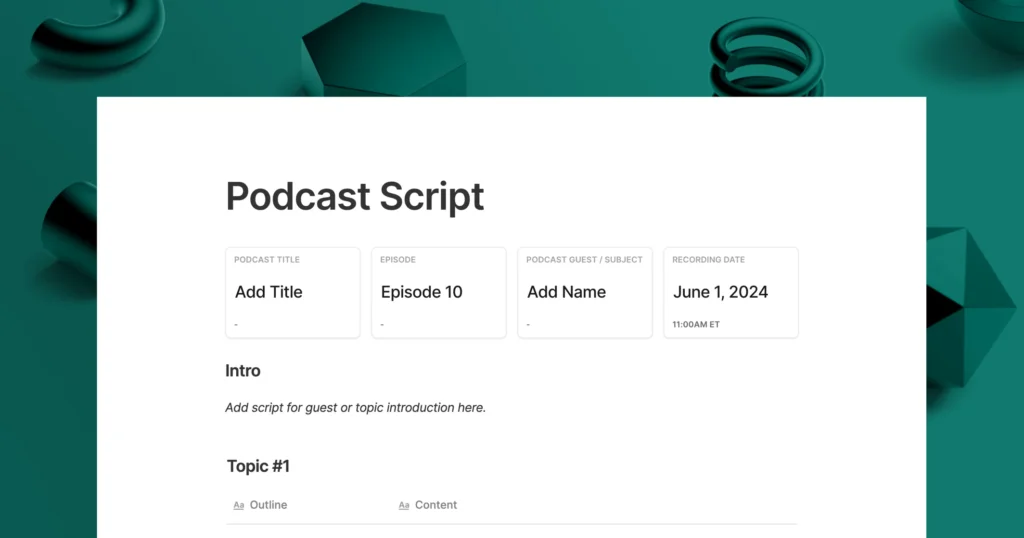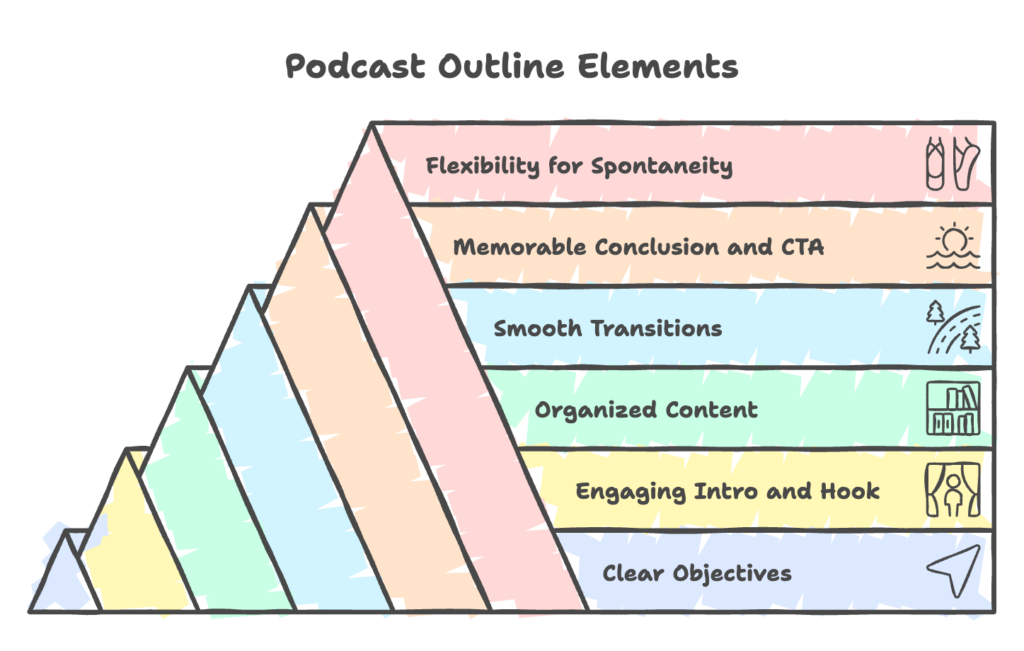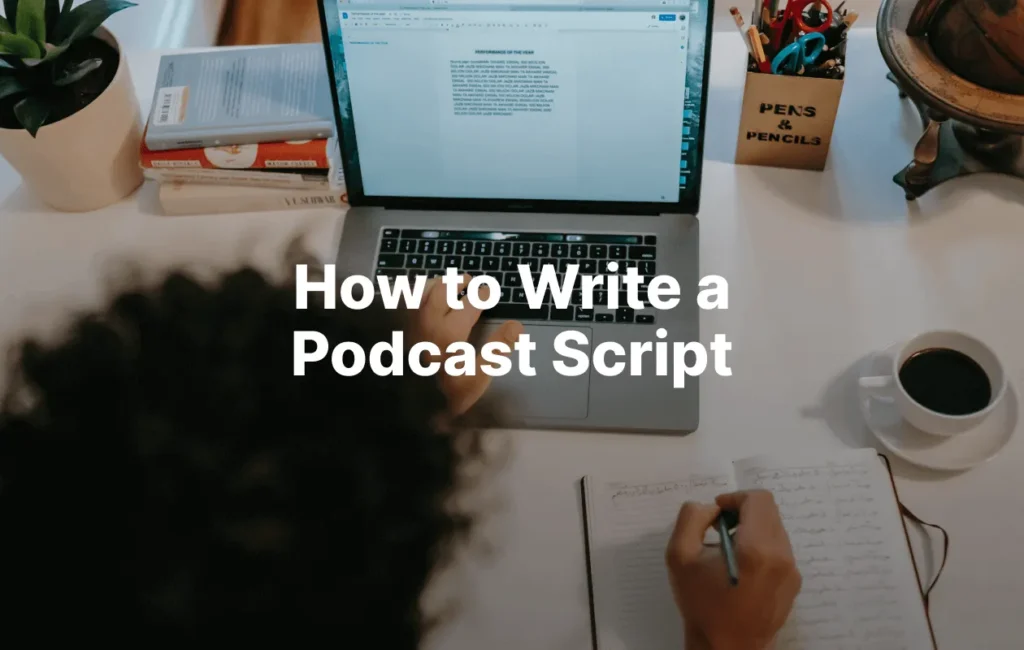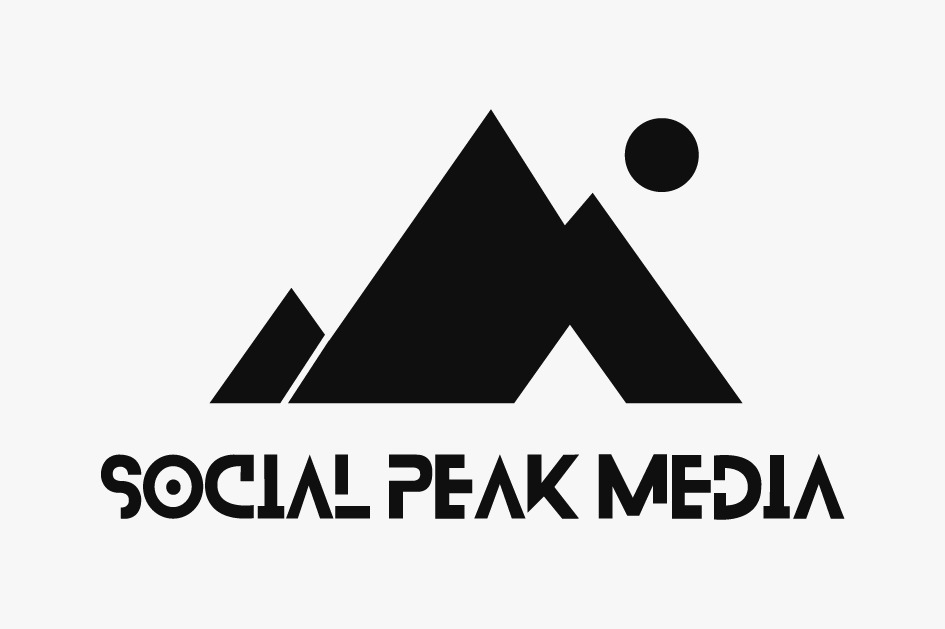Podcast Script or Outline: A Complete Guide to Structuring Your Show
If you’re starting a podcast, one of the first questions you’ll face is: “Should I write a full script or just use an outline?” The answer depends on your style, your goals, and how you want your show to sound.


In this article, we’re answering a common question for creators: Do you need a podcast script or outline? Whether you’re going for polished and professional or casual and conversational, how you plan your episodes can make or break your flow. We’ll break down the benefits, drawbacks, and which option fits your vibe, and your audience.
Benefits of Using a Script or Outline
Having a script or outline even a simple one offers several key advantages:
Keeps Your Podcast Organized and On Track
Having a clear structure, whether it’s a detailed script or a loose outline helps you stay focused, hit all your talking points, and avoid going off-topic.
Reduces Filler Words, Pauses, and Awkward Moments
With even a basic outline, you’re less likely to stumble over your thoughts, repeat yourself, or fill time with “um” and “uh.” You’ll sound smoother and more intentional.
Cuts Down on Post-Production Time
When your episode follows a plan, there’s less editing needed. Fewer tangents and mistakes mean a faster, more efficient production process.
Gives You More Confidence Behind the Mic
Knowing what you’re going to say takes the pressure off. You can relax and focus on delivery, rather than scrambling for your next thought.
Creates a Better Experience for Listeners
A structured podcast feels more professional, keeps your audience engaged, and helps them actually retain what you’re sharing, no fast-forwarding necessary.
Outline vs. Script: Which Works Better?

The choice between a full script and an outline depends on your podcasting style.
When to Use a Full Script
• Storytelling Podcasts: Narrative podcasts or scripted shows benefit from detailed scripts.
• Educational Content: If accuracy is key, scripting ensures you deliver facts clearly.
• New Podcasters: Beginners may feel more comfortable reading from a script.

Pros:
• Precision and accuracy
• Less chance of forgetting important details
• Great for solo episodes
Cons:
• Can sound stiff or unnatural if over-rehearsed
• Requires more preparation time
When to Use an Outline
• Interview Podcasts: Allows for flexibility and natural conversation
• Conversational Shows: Keeps the flow informal and engaging
• Experienced Podcasters: Once you’re comfortable, an outline helps you stay on track without sounding scripted

Pros:
• Natural, authentic delivery
• Easier to improvise and engage with guests
• Faster preparation
Cons:
• Higher chance of going off-topic
• May require more editing
How to Write a Simple Podcast Script

Writing a podcast script doesn’t have to be complicated. Here’s how to do it:
Step 1 – Create an Episode Outline
Start with key sections:
• Intro
• Main content
• Call to action (CTA)
• Outro
Step 2 – Fill in Details
Write full sentences for:
• Episode intro
• Key talking points
• Transitions between sections
• CTA and outro
Step 3 – Keep It Conversational
Write the way you speak. Avoid overly formal language.
Step 4 – Leave Room to Improvise
Even with a script, allow yourself flexibility to add stories, jokes, or guest reactions.
Our Recommended Template for Beginners
Here’s a simple, beginner-friendly script structure you can use for every episode:
Episode Title: [Enter Title]
Episode Goal: [What you want listeners to gain]
Intro:
“Welcome to [Podcast Name]. I’m your host, [Your Name]. Today, we’re diving into [Topic].”
Main Content:
• Key Point 1: [Details]
• Key Point 2: [Details]
• Key Point 3: [Details]
Transition:
“Before we wrap up, here’s one more thing you should know…”
Call to Action (CTA):
“If you enjoyed this episode, subscribe, leave a review, and share it with a friend. Visit [Your Website] for more resources.”
Outro:
“Thanks for listening! I’ll see you in the next episode.”
Final Thoughts
Whether you use a full script or an outline, the key is preparation. A clear structure improves the quality of your podcast and helps you deliver value to your audience every time.
At Social Peak Media, we help podcasters with every aspect of production—from scripting and editing to promotion. Contact us today to make your podcast sound and flow like a pro.







